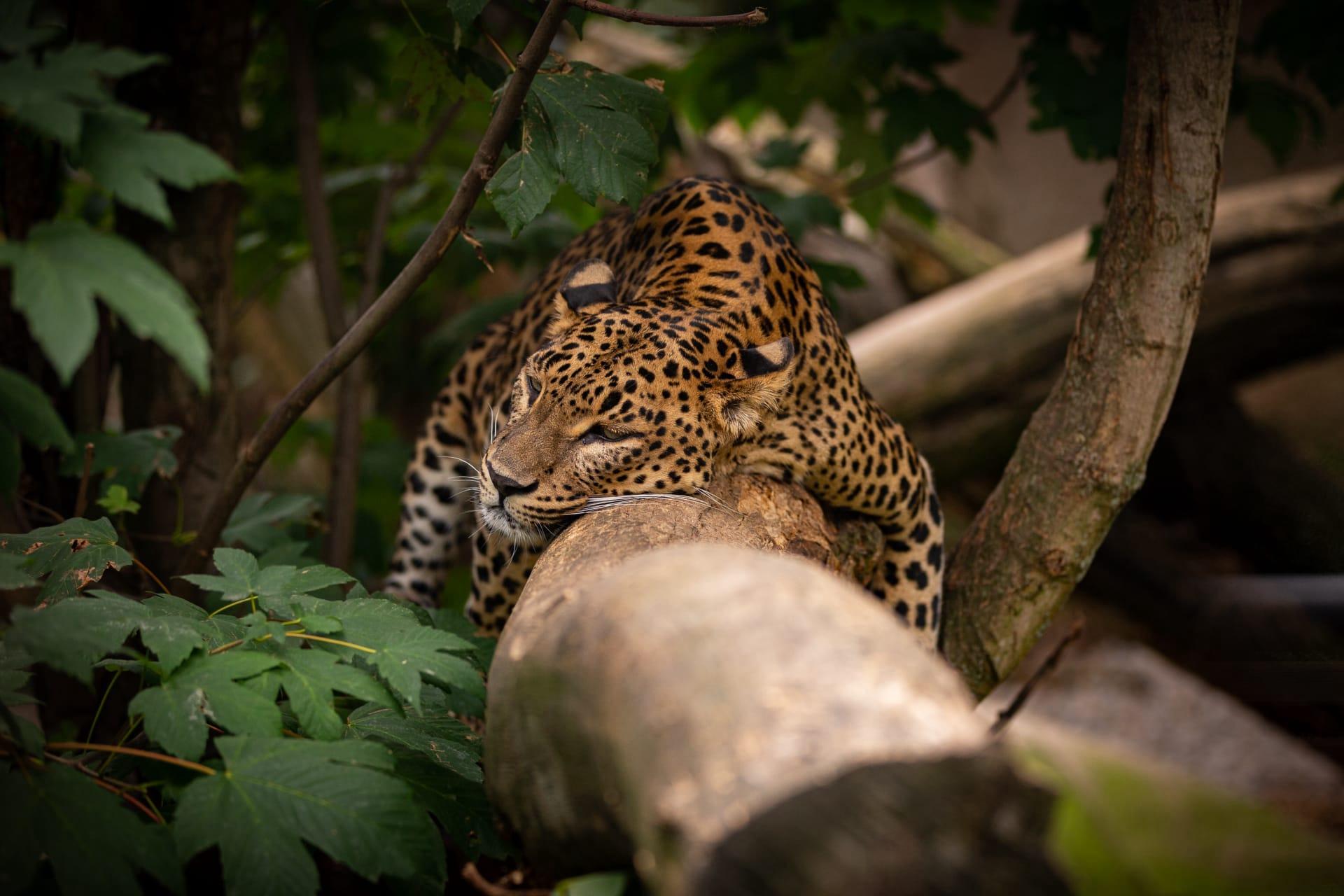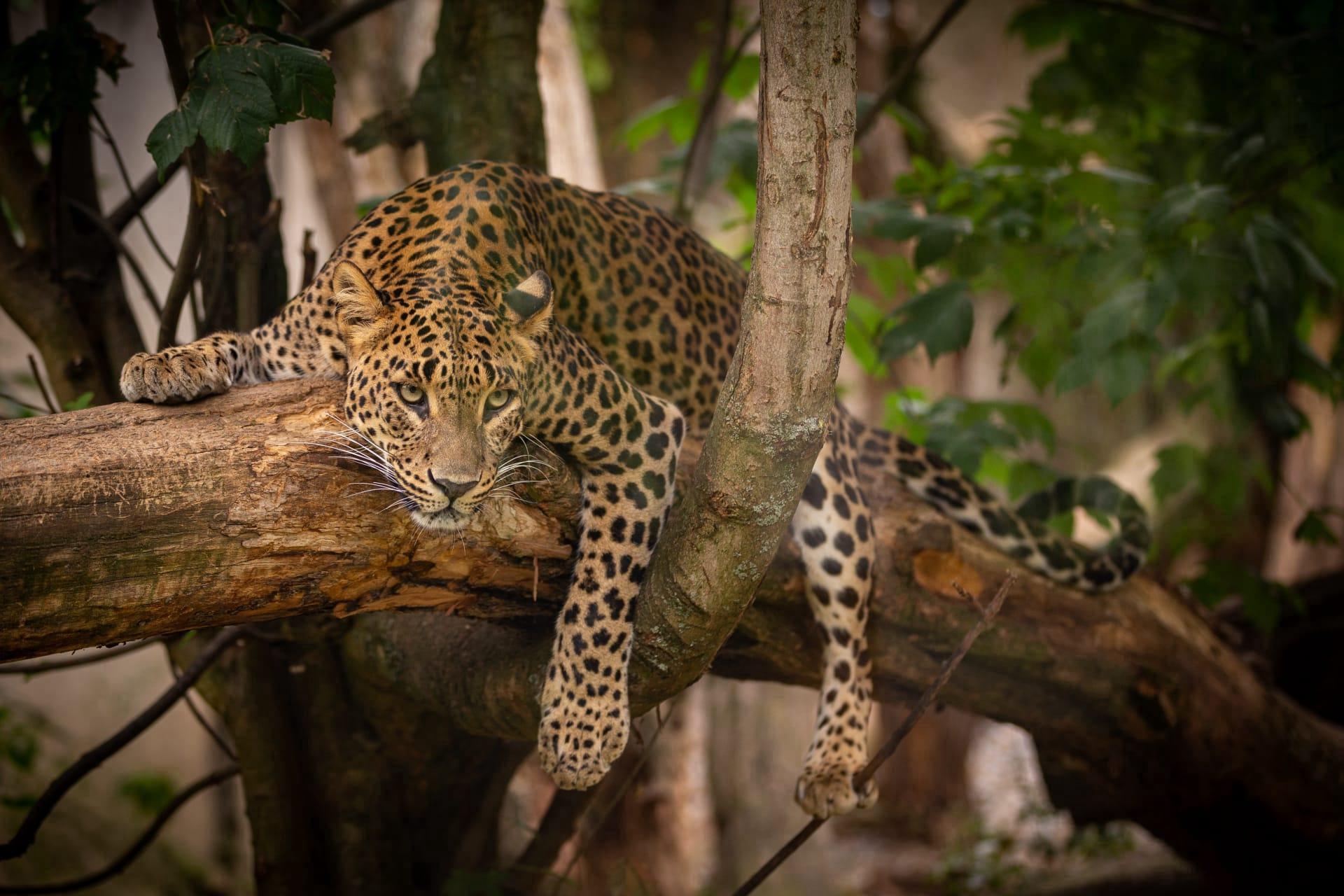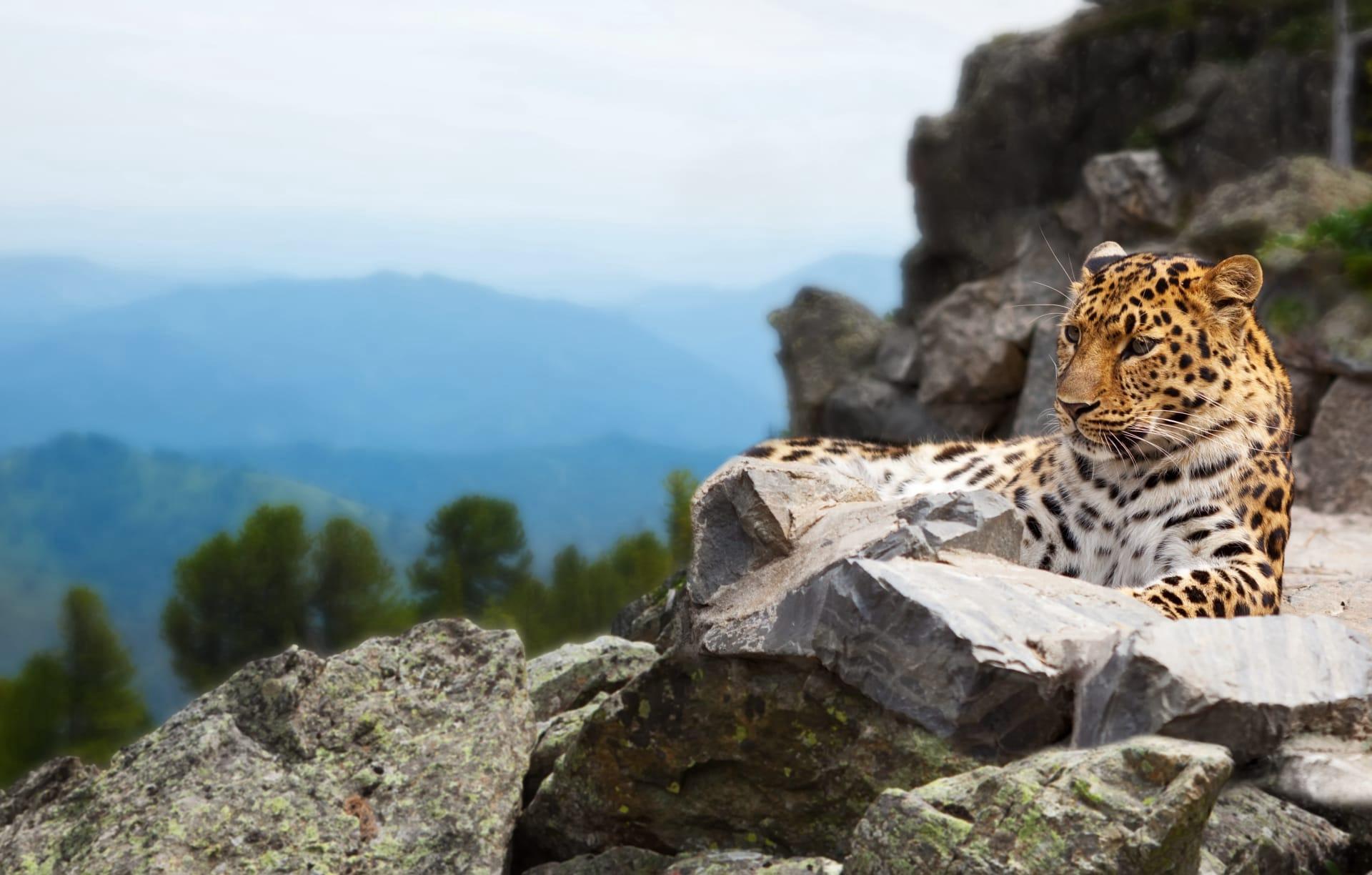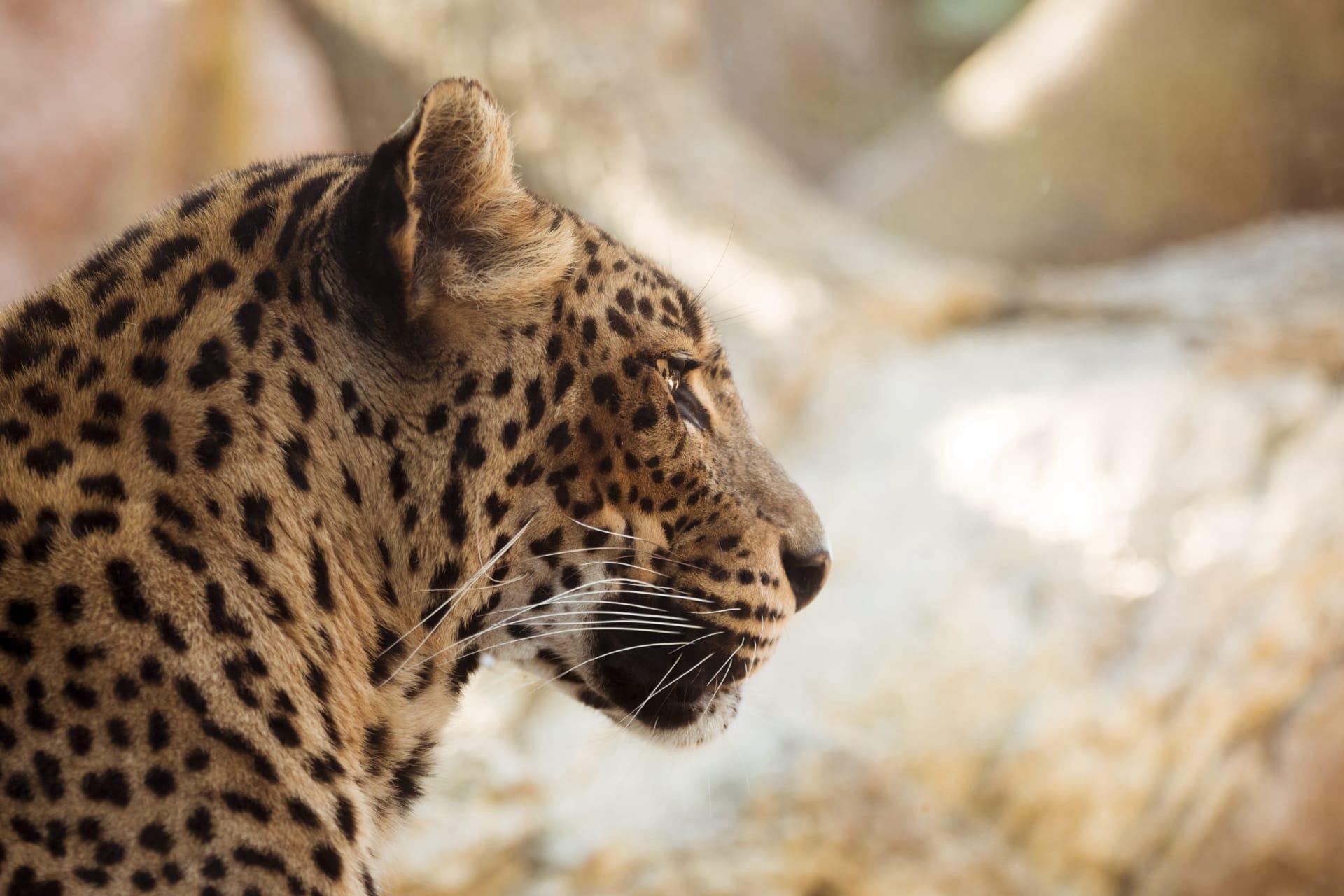Leopard Characteristics
- Home /
- Mini Encyclopedia /
- Animal /
- Leopard Characteristics
1
Leopards, those sleek and powerful cats, boast an impressive physique. On average, they measure about 4 to 6.2 feet in length, with a tail adding an extra 25 to 39 inches. Their weight varies significantly, ranging from 66 to 198 pounds. These solitary creatures have a lifespan of 12 to 17 years in the wild. Their rosette-patterned coat, a unique camouflage, is not just for beauty; it helps them blend seamlessly into their environment.
Among their most remarkable organs are their eyes. Leopards have a highly adapted vision, particularly at night. Their eyes are capable of seeing in low light conditions six times better than humans. This exceptional night vision is crucial for their nocturnal hunting habits, allowing them to spot prey from great distances even in near darkness.

2
Question: Why do leopards climb trees?
Answer: Leopards are known for their exceptional climbing skills. This behavior is primarily for safety and strategic hunting. By climbing trees, they can keep their catch away from scavengers and also have a vantage point to survey their territory or spot potential prey. Their powerful limbs enable them to climb and carry prey, sometimes heavier than themselves, up into the branches.

3
Leopards are renowned for their agility and speed. They can run at speeds of up to 58 kilometers per hour and leap more than 6 meters horizontally and up to 3 meters vertically. This agility is vital in their predatory pursuits, helping them make quick and powerful bursts to catch their prey.
In hunting, leopards use a blend of stealth and power. They are opportunistic hunters, preying on a diverse diet ranging from small insects to large ungulates. Leopards stalk their prey silently, using their camouflaged coat as cover before pouncing with a rapid, powerful attack. Their strong jaws and neck muscles allow them to drag their prey into trees, avoiding competition with other predators.

4
Leopards are versatile in their habitat preferences, found in various environments from rainforests to savannas, and even mountainous regions. This adaptability to different terrains is key to their survival. They mark and defend their territory, which can range up to 30 square kilometers for males.
Regarding reproduction, leopards are solitary except during mating. Females give birth to a litter of 2 to 4 cubs after a gestation period of around 90 to 105 days. Cubs are born blind and vulnerable, staying hidden for about eight weeks. During this time, the mother fiercely protects and nurtures them until they are independent, usually at around 18 to 24 months.

5
Book: "The Leopard's Tale: Revealing the Mysteries of Africa's Elusive Big Cat" by Jonathan Scott, an acclaimed wildlife photographer. This book, originating from Kenya in the early 2000s, offers a stunning visual journey into the life of the African leopard. Scott combines photography with insights into the behavior, habitat, and survival challenges of these magnificent creatures.
Book: "Leopards of the African Plains" by Peter Jackson, a renowned zoologist. Published in the 1990s, this book delves into the lives of leopards across the African continent. Jackson's comprehensive study includes aspects of their hunting techniques, mating rituals, and the threats they face in rapidly changing environments.